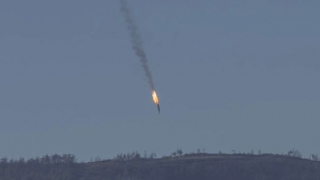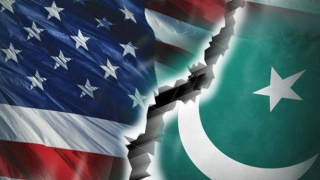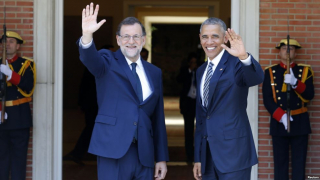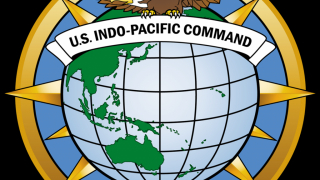The United States and its “Grand Area” doctrine continues to this day
Beginning from 1939, the Roosevelt administration foresaw that the Second World War would conclude with America in a dominant global position. These Grand Area principles of post-World War supremacy remained firmly in place, even as the Third Reich was imposing its will on mainland Europe, as from 1941 the Germans also swept into vast open spaces of the western Soviet Union.
Shortly prior to the global conflicts, America constituted one of the world's strongest countries, and was even then posing a threat to Britain's waning power. The US also held overseas territories in the Pacific, having annexed Hawaii in 1898, while by 1902 Washington had completed its takeover of the Philippines in what was a bloody conquest.
Through the 1920s and 1930s, American elite influence was stretching into the eastern hemisphere, causing tensions with Imperial Japan in the latter's sphere of interest.
Contrary to often-held misconceptions, the December 1941 Japanese attack on the Pearl Harbor naval base in Hawaii – which killed almost 2,500 Americans – came mostly as a pre-emptive response to US encroachment and financial pressures on Japan. By the late summer of 1941, Tokyo's access to raw materials had been cut off by Washington, a pivotal factor in Tokyo unleashing its air force over Pearl Harbor less than six months later.
American leaders were planning a large-scale war against the Japanese for years. In January 1932 for instance, the “father of the US Air Force” General Billy Mitchell advocated that “Japan offers an ideal target for air operations” and her towns “built largely of wood and paper form the greatest aerial targets the world has ever seen”.
In November 1940, updated plans were put forth by US General Claire Chennault, who espoused "firebomb attacks" on the "teeming bamboo ant heaps of Honshu and Kyushu". President Roosevelt was "simply delighted" when hearing of Chennault's proposals. Three weeks before Pearl Harbor, on 15 November 1941, US General George Marshall informed reporters in a behind-closed-doors press conference that US airplanes will "set the paper cities of Japan on fire. There won't be any hesitation about bombing civilians. It will be all-out".
To maintain its growing power, the United States would have to overcome hurdles presented by the Axis powers. After serious initial setbacks during the first six months of fighting against highly motivated Japanese soldiers, including the “loss of the Philippines” in May 1942 – the Americans enjoyed a crucial victory, in early June 1942, at the Battle of Midway in the north Pacific Ocean.
The Battle of Midway defeat for the Japanese in this highly strategic area “doomed” the Empire, and is known as “the turning point of the Pacific”. From June 1942, the Japanese were set largely in retreat, unable to match America's military might and industrial strength.
Meanwhile, the Nazi drive to the heartland of Russia came to an abrupt halt in early December 1941, in what comprised the defining moment of the war in Europe; and not Stalingrad a year later, as is sometimes claimed.
In the high summer of 1942 the Wehrmacht – shorn of about half of its original strength from the previous year – did begin their second major offensive to the east. Once more, the Germans achieved outstanding victories in the face of lengthening odds, and in opposition to the now better equipped and better prepared Soviet divisions.
Over the course of both world wars, German troops proved themselves of appreciably superior quality to any other soldiers in the field. These realities are recounted by a number of British and American historians, along with war leaders like Winston Churchill, who wrote in 1948 that, "The superiority of the Germans in design, management and energy were plain" and Allied troops "were baffled by the vigour, enterprise and training of Hitler's young men".
Yet there was simply not enough German soldiers available to win a world war, nor did The Third Reich, even with its expansionism, have access to the raw materials required.
Nevertheless, towards the end of 1942, the Germans again proved their capabilities by plunging deeper into Russian territory than Napoleon had managed 130 years before. In early November 1942, some German units were located a mere 200 miles from oil rich Baku to the south, the capital of Azerbaijan along the Caucasus region. Moreover, 90% of Stalingrad lay in German hands by 8 November 1942, but Nazi intelligence failed to discern large Soviet troops concentrations that were building up in the rear.
On 23 November 1942, the Soviet ring closed around Stalingrad, trapping much of the German Sixth Army, whose resistance somehow continued well into the New Year of 1943, despite being slowly starved and outnumbered in manpower by four to one. On 2 February 1943, a proportion of Wehrmacht troops refused to surrender at Stalingrad with the remainder of the Axis powers. Over 10,000 German soldiers continued engaging the Red Army, hiding in cellars and emerging into the streets to fight, before they at last capitulated in early March 1943.
Some of these Germans boasted in letters home that they would prefer to "sacrifice themselves for the Führer" rather than enter Soviet captivity. The experienced Israeli-born historian, Omer Bartov, confirms that these last fighting German troops at Stalingrad were motivated solely by their belief in Nazism.
As 1943 advanced, it became clear to Washington officials that the Third Reich would not be victorious after all. Grand Area goals were now expanded by US planners to include as much of Eurasia as possible – encompassing western Europe, where an American-led landing was before long anticipated, in order to liberate France and other European countries from Nazi occupation.
The Grand Area of US control included other land masses such as: Latin America, Britain's crumbling empire in eastern and southern Asia, along with most importantly of all, the Middle East. The American diplomat Adolf Berle, one of president Franklin D. Roosevelt's most trusted advisers, said that hegemony over the Middle East would grant the US “substantial control of the world”.
American industrial output had almost quadrupled by 1945, wiping away the last effects of the Great Depression. America gained enormously from the war, while her allies or enemies were either ruined financially or defeated. US strategists outlined that, in the great expanses of Grand Area planning, Washington would enjoy “unquestioned power” along with “military and economic supremacy”.
Following 1945, the biggest threat to US mastery was not the Soviet Union, as was understood in Washington – but, in fact, nationalist movements represented the real fear. That is, the populace of a foreign country taking matters into their own hands, to the detriment of Western business and investors.
Grand Area policies were later enforced, noticeably in Iran during the summer of 1953, when the Western-educated Shah was granted dictatorial powers; with prime minister Mohammad Mossadegh ousted by a US/UK engineered putsch. Mossadegh had been making moves to nationalize Iran's oil reserves, placing it at the disposal of the Iranian people.
Through the mid-1950s and into the 1960s, threat of popular uprisings in Vietnam and neighboring countries was concerning the Eisenhower, Kennedy, Johnson and Nixon administrations. Grand Area doctrine was a central element leading US governments to direct their military machine towards Vietnam, as fears mounted that south-east Asia was slipping free of Washington's hold.
In late 1961 and early 1962, president John F. Kennedy initiated napalm deployment and US aircraft bombing raids upon Vietnamese soil. The US military assault on Vietnam was later escalated under presidents Lyndon Johnson (1963-1969) and Richard Nixon (1969-1974).
Other countries bordering Vietnam endured vast US military attacks, such as Cambodia and Laos, while a Washington and London-backed coup in Indonesia to the south – during the mid-1960s – allowed the dictator General Suharto to assume power amid dreadful bloodshed. These actions largely removed the threat of Washington losing influence in south-east Asia.
Indonesia was notably important to Grand Area designs. In October 1967, less than two years before Nixon became president, he wrote that “The US presence” represented “a vital factor in the turnaround in Indonesia” which removed that country “from the Chinese orbit”.
Nixon continued that with “its 3,000-mile arc of islands containing the region's richest hoard of natural resources, Indonesia constitutes by far the greatest prize in the Southeast Asian area”. After Suharto's takeover, Western companies came flocking in to exploit Indonesia's mineral reserves.
As mentioned, the Middle East is also crucial in Grand Area planning; and during the post-World War II years Washington has intervened directly or covertly so as to maintain control in Middle East states like Afghanistan, Saudi Arabia and Iraq. The Middle East contains almost 50% of all known oil sources on earth. About 40% of the world's proven gas reserves also lie in there.
Nixon outlined that the Middle East's oil "is the lifeblood of modern industry, the Persian Gulf region is the heart that pumps it, and the sea routes around the Gulf are the jugular vein through which that lifeblood passes".
A US State Department memorandum, dispatched to president Harry Truman in 1945, especially highlighted Saudi Arabia whose “oil resources constitute a stupendous source of strategic power”. The Saudi nation contains the second largest oil reserves in the world, behind Venezuela, and has remained an ally of Washington ever since.
British planners described Middle East resources in 1947 as “a vital prize for any power interested in world influence or domination”. British foreign secretary Ernest Bevin, a Labour Party politician, remarked in April 1946 that “Without the Middle East and its oil” he envisaged “no hope of our being able to achieve the standard of living at which we are aiming in Great Britain”.
However, the US State Department revealed to president Truman that, “The British publicly and officially admit that they are no longer able to keep the Middle East in order without our help”.














